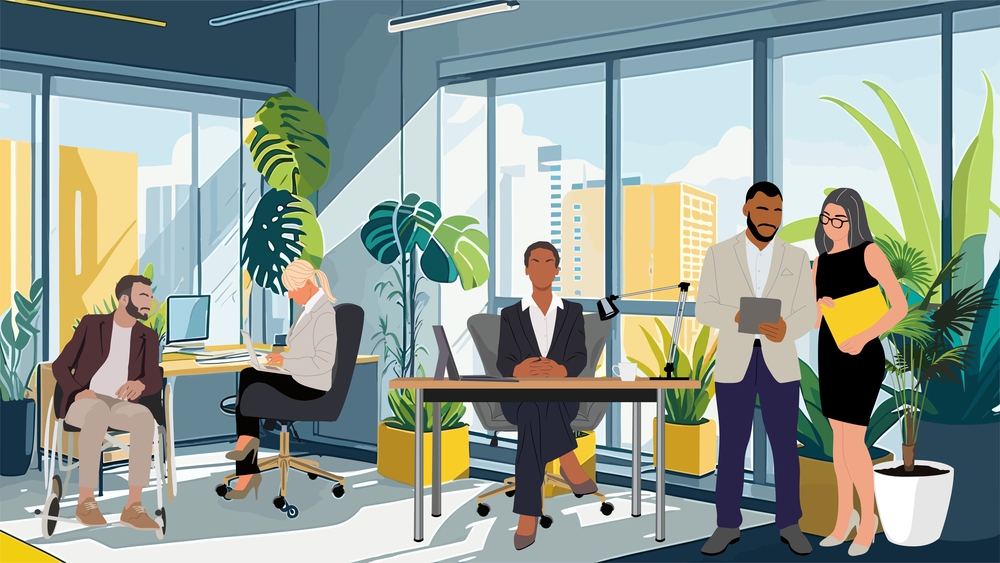In today’s diverse and dynamic professional landscape, creating an inclusive work environment is not just a moral imperative but also a strategic advantage. By embracing diversity and making necessary adjustments to accommodate everyone, companies can unlock the full potential of their teams and drive innovation. Let’s explore two key pillars of workplace inclusivity: reasonable accommodations and universal design.
Understanding Reasonable Accommodations
Reasonable accommodations are tailored adjustments made to the workplace to ensure equal opportunities for individuals with disabilities. These modifications aim to level the playing field, allowing employees to perform their duties effectively. Whether it’s adapting work hours, providing assistive technologies, or making physical spaces accessible, embracing reasonable accommodations fosters inclusivity and supports the diverse needs of all team members.
Best Practices for Reasonable Accommodations
1. Understanding the Need:
The first step is recognizing the importance of individual differences and acknowledging that some employees may require adjustments to perform their duties effectively. This could be due to visible or invisible disabilities, neurodiversity, religious beliefs, or other personal circumstances.
2. Open Communication Channels:
Establish open and transparent channels for employees to communicate their needs. Encourage a culture where individuals feel comfortable expressing their requirements without fear of judgment. This can be achieved through regular check-ins, anonymous feedback mechanisms, and accessible HR resources.
3. Individualized Solutions:
Recognize that each employee is unique, and their needs may vary. Work with individuals to create personalized solutions that address their specific requirements. Whether it’s modifying work hours, providing assistive technologies, or redesigning physical spaces, tailoring accommodations can make a significant difference.
4. Collaborative Process:
Work closely with the employee to determine the most effective accommodation. This ensures that the solution is tailored to their specific needs and promotes ownership of the process.
Embracing Universal Design
Universal Design is an inclusive approach to creating products, environments, and systems that are accessible and usable by everyone, regardless of age, ability, or background. The concept emphasizes designing for diversity from the outset, ensuring that spaces and products are inherently accommodating to a wide range of users. Embracing Universal Design principles, we not only enhance accessibility for individuals with disabilities but also create environments that benefit everyone, promoting inclusivity and equal opportunities.
Best Practices for Universal Design
1. Accessible Workspaces:
Design physical workspaces with accessibility in mind. Ensure that all areas are wheelchair accessible, have proper lighting, and incorporate ergonomic furniture. Accessibility benefits not only employees with disabilities but also enhances the overall work environment for everyone.
2. Tech Accessibility:
Invest in technology that is universally accessible. From websites to internal software, make sure that digital platforms are navigable for individuals with different abilities. This includes providing alternatives for visual or auditory information and ensuring compatibility with assistive technologies.
3. Inclusive Policies and Practices:
Develop and implement policies that reflect an inclusive mindset. From recruitment processes to performance evaluations, ensure that your company’s policies are designed to accommodate a diverse range of talents and abilities. Promote flexibility and a culture that values diverse perspectives.
4. Training and Awareness:
Educate employees about the importance of inclusivity and universal design. Train them on how to recognize and address accessibility barriers and create a culture of respect and support for diverse colleagues
Conclusion
Inclusivity in the workplace requires a conscious effort to understand the diversity of human experiences and needs. By integrating reasonable accommodations and universal design principles, employers can foster a supportive, productive, and truly inclusive workplace. Remember that inclusivity is not a destination but a journey that evolves with our understanding of diversity.
As we navigate the ever-evolving professional landscape, let’s steadfastly commit to constructing workplaces that not only celebrate diversity but also empower every individual to contribute their best.
If you have any questions or would like to share your thoughts and experiences with disability inclusion, please feel free to plan some time with me at BookTrish.com

